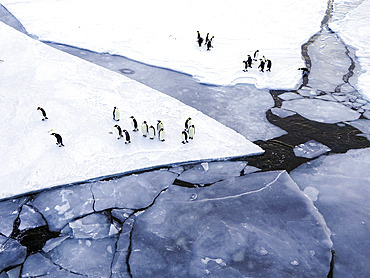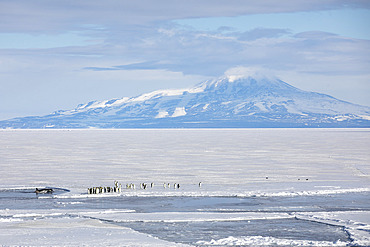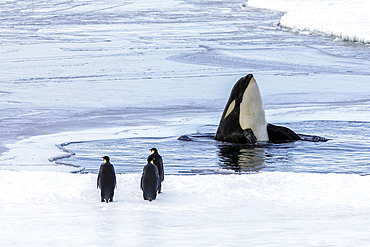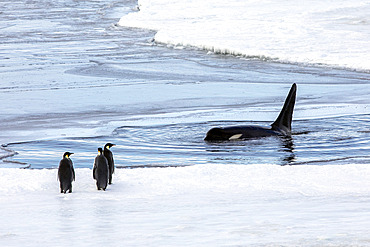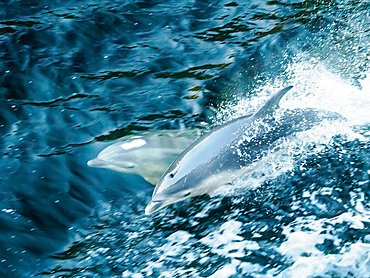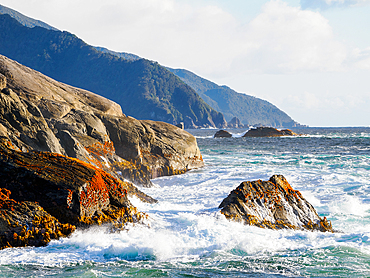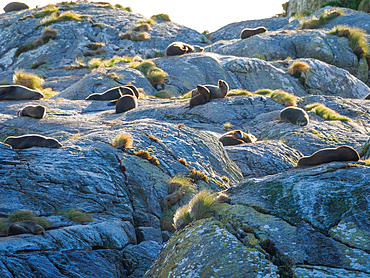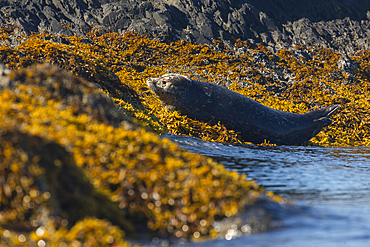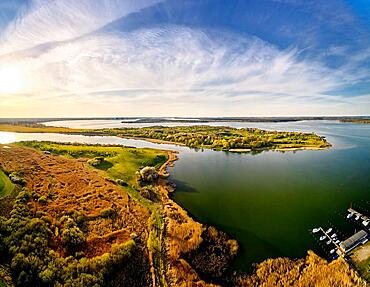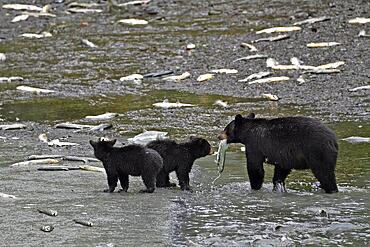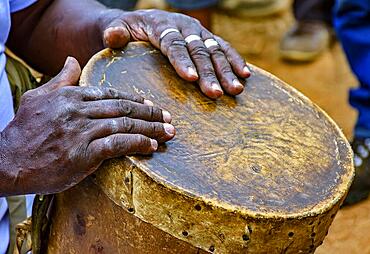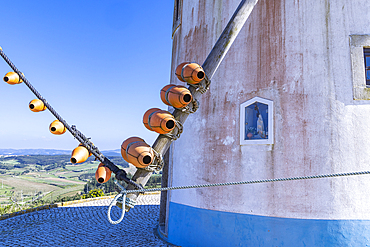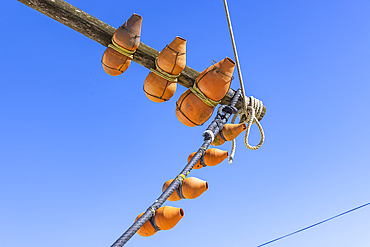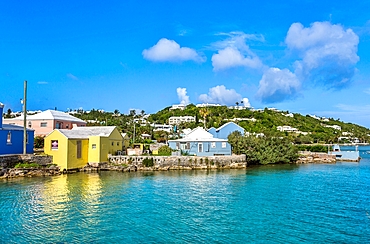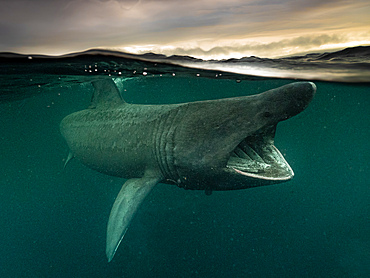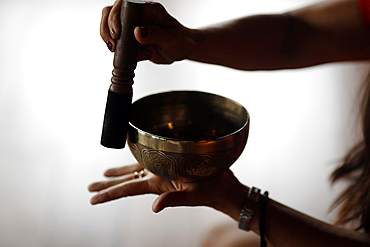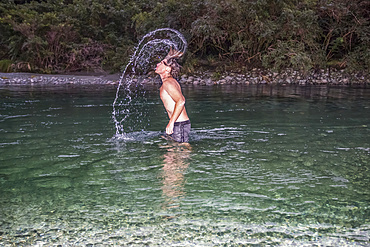Recent searches
Loading...
860-292193 - Emperor penguins (Aptenodytes forsteri) on pack ice, McMurdo Sound, Ross Sea, Antarctica
860-292191 - Killer whale (Orcinus orca) and Emperor penguins (Aptenodytes forsteri) on pack ice in the Ross Sea, McMurdo Sound, Antarctica
860-292192 - Emperor penguins (Aptenodytes forsteri) on pack ice, McMurdo Sound, Ross Sea, Antarctica
860-292190 - Killer whale (Orcinus orca) and Emperor penguins (Aptenodytes forsteri) on pack ice in the Ross Sea, McMurdo Sound, Antarctica
860-292189 - Killer whale (Orcinus orca) and Emperor penguins (Aptenodytes forsteri) on pack ice in the Ross Sea, McMurdo Sound, Antarctica
1242-566 - Waterfall on Milford Sound, Fiordland National Park, Te Wahipounamu, UNESCO World Heritage Site, South Island, New Zealand, Pacific
1242-565 - Waterfall on Milford Sound, Fiordland National Park, Te Wahipounamu, UNESCO World Heritage Site, South Island, New Zealand, Pacific
1242-563 - Waterfall on Milford Sound, Fiordland National Park, Te Wahipounamu, UNESCO World Heritage Site, South Island, New Zealand, Pacific
1242-564 - Waterfall on Milford Sound, Fiordland National Park, Te Wahipounamu, UNESCO World Heritage Site, South Island, New Zealand, Pacific
1242-562 - Dolphins in Doubtful Sound, Fiordland National Park, Te Wahipounamu, UNESCO World Heritage Site, South Island, New Zealand, Pacific
1242-561 - Crashing waves on rocks at the entrance to Doubtful Sound, Fiordland National Park, Te Wahipounamu, UNESCO World Heritage Site, South Island, New Zealand, Pacific
1242-560 - Fur seals sunning themselves on a rock at the mouth of Doubtful Sound, Fiordland, South Island, New Zealand, Pacific
1242-558 - Waterfall off towering cliffs on Doubtful Sound, Fiordland National Park, Te Wahipounamu, UNESCO World Heritage Site, South Island, New Zealand, Pacific
1242-559 - Rainbow over the fjord of Doubtful Sound, Fiordland National Park, Te Wahipounamu, UNESCO World Heritage Site, South Island, New Zealand, Pacific
832-404462 - Meares Glacier, detail view, rainforests in the background, Chugach Mountains, Prince William Sound, Valdez, South Alaska, Alaska, USA, North America
832-404461 - Excursion boat in front of Columbia Glacier, Chugach Mountains in the background, Prince William Sound, Valdez, South Alaska, Alaska, USA, North America
1358-268 - Turtle Island, Harrington Sound, Smiths, Bermuda, Atlantic, North America
832-404212 - Frontal view of a musician playing the piano in a production studio
832-404211 - Close-up of the hands of a pianist recording music in studio
1358-243 - Catamaran in The Great Sound, moored in front of typical pastel coloured properties, Bermuda, Atlantic, North America
1116-52886 - Harbor seal (Phoca vitulina) just above tideline lying down on a bed of yellow, orange seaweed in the sun, on a summer day in Prince William Sound, Alaska, United States of America
1116-52885 - Close-up portrait of an oystercatcher bird (Haematopus) standing on a rock covered in yellow, orange colored seaweed, on a summer day in Prince William Sound, Alaska, United States of America
1116-52884 - A wet bald eagle (Haliaeetus leucocephalus) sits perched on a nest in grass atop an island at low tide, exposing rock and orange, yellow seaweed on a cloudy day in Prince William Sound, Alaska, United States of America
832-403569 - Peninsula devin near Stralsund from the air
832-402853 - Fishing boat pulling a full net of pink salmons (Oncorhynchus gorbuscha) out of the sea, Prince William Sound, Alaska, USA, North America
832-402852 - Pink salmons (Oncorhynchus gorbuscha) swim densely packed upstream on their way to spawning grounds, Prince William Sound, Alaska, USA, North America
832-402851 - Pink salmon (Oncorhynchus gorbuscha) jumping up a waterfall on their way to spawning grounds, Prince William Sound, Alaska, USA, North America
832-402849 - American Black Bear (Ursus americanus) with two cubs standing in the water holding captured salmon in her mouth, rainforest, Prince William Sound, Alaska, USA, North America
832-402841 - The glacier tongue calves into the Pacific, Columbia Glacier, Prince William Sound, Alaska, USA, North America
832-402840 - Fishing boat in Prince William Sound, Alaska, USA, North America
832-400211 - Ethnic drums also called atabaques on the streets of Pelourinho, the historic center of the city of Salvador in Bahia, Brasil
832-400209 - Ethnic drums also called atabaques on the streets of Pelourinho, the historic center of the city of Salvador in Bahia, Brasil
832-400169 - Percussionist playing a rudimentary atabaque during afro-brazilian cultural manifestation, Rio de Janeiro, Rio de Janeiro, Brasil
832-399782 - Happy Mothers Day - sweet macarons in heart shape with flowers in pink tone
832-399582 - Sun star at sunset over the mountain peaks, view of fjord Raftsund and mountains, view from the top of Dronningsvarden or Stortinden, Vesteralen, Norway, Europe
1366-1065 - Europe, Portugal, Moita dos Ferreiros. Clay pots, known as buzio, on a traditional windmill. The sound of the wind in the buzio help the miller control the mill.
1366-1063 - Europe, Portugal, Moita dos Ferreiros. Clay pots, known as buzio, on a traditional windmill. The sound of the wind in the buzio help the miller control the mill.
832-398443 - portrait young woman with mobile jumping
1358-147 - Harrington Sound, Bermuda, Atlantic, North America
1358-146 - Harrington Sound, close to the site of the former Devil's Hole sinkhole, Smiths Parish, Bermuda, Atlantic, North America
1358-145 - Harrington Sound, close to the site of the former Devil's Hole sinkhole, Smiths Parish, Bermuda, Atlantic, North America
1350-6678 - Strawberry Poison Frog (Dendrobates pumilio), adult, Bastimentos National Park, Bocas del Toro, Panama. The strawberry poison frog or strawberry poison-dart frog (Oophaga pumilio or Dendrobates pumilio) is a species of small amphibian poison dart frog found in Central America. It is common throughout its range, which extends from eastern central Nicaragua through Costa Rica and northwestern Panama. The species is often found in humid lowlands and premontane forest, but large populations are also found in disturbed areas such as plantations. The strawberry poison frog is perhaps most famous for its widespread variation in coloration, comprising approximately 15���30 color morphs, most of which are presumed to be true-breeding. O. pumilio, while not the most poisonous of the dendrobatids, is the most toxic member of its genus. The species is most diverse in Panama with varieties in vivid shades of all red, orange, blue, yellow or green, green and yellow, white with red, orange or black and spotted varieties. The most colorful mix is found in Isla Bastimentos Marine National Park though not all in one place. Colors vary by location. A beach on the north side of the island is named after the species. Two of Southern Explorations' Panama tours visit red frog habitat. Both the eight-day Panama Adventure trip and eleven-day Panama Highlights trip spend time in Isla Bastimentos Marine National Park and the former also goes to Red Frog Beach.
The red frog is not as poisonous as some of its cousins and is not a threat to humans. It subsists on a diet of ants that dine on poisonous plants, providing the red frog its protective skin toxin. Males attract females with a loud quick chirp. To hear the distinctive sound before you depart on your Panama tours, go to the University of Michigan Museum's biodiversity website (www.animaldiversity.ummz.umich.edu.) After birth, the tadpoles climb aboard the mother who deposits them in different protected areas where she retu
1350-6535 - Split shot of a Basking Shark (Cetorinus Maximus) in Gunna Sound, Isle of Colll, Scotland. It's mouth is gaping as it feeds. Clouds are lit with the setting sun in the background.
809-8597 - Bowl in the hands of prayer, Tibetan singing bowl, Buddhist instrument used in sound therapy, meditation and yoga, Quang Ninh, Vietnam, Indochina, Southeast Asia, Asia
809-8594 - Tibetan bowl, Buddhist woman practising a singing bowl for sound therapy in atmosphere for healing, meditation, yoga and relaxation, Quang Ninh, Vietnam, Indochina, Southeast Asia, Asia
809-8598 - Bowl in the hands of prayer, Tibetan singing bowl, Buddhist instrument used in sound therapy, meditation and yoga, Quang Ninh, Vietnam, Indochina, Southeast Asia, Asia
809-8595 - Tibetan bowl, Buddhist woman practising a singing bowl for sound therapy in atmosphere for healing, meditation, yoga and relaxation, Quang Ninh, Vietnam, Indochina, Southeast Asia, Asia
809-8601 - Tibetan bowl, Buddhist woman practising a singing bowl for sound therapy in atmosphere for healing, meditation, yoga and relaxation, Quang Ninh, Vietnam, Indochina, Southeast Asia, Asia
809-8599 - Bowl in the hands of prayer, Tibetan singing bowl, Buddhist instrument used in sound therapy, meditation and yoga, Quang Ninh, Vietnam, Indochina, Southeast Asia, Asia
809-8600 - Tibetan bowl, Buddhist woman practising a singing bowl for sound therapy in atmosphere for healing, meditation, yoga and relaxation, Quang Ninh, Vietnam, Indochina, Southeast Asia, Asia
809-8596 - Tibetan bowl, Buddhist woman practising a singing bowl for sound therapy in atmosphere for healing, meditation, yoga and relaxation, Quang Ninh, Vietnam, Indochina, Southeast Asia, Asia
832-397318 - Fog at the Oresundsbron at the Oresund, connecting Denmark and Sweden
1358-83 - Harrington Sound, Bermuda, Atlantic, Central America
1112-6929 - A lone polar bear (Ursus maritimus) on the ice in Lancaster Sound, Nunavut, Canada, North America
1112-6935 - A mother Atlantic walrus (Odobenus rosmarus) with her young calf in Lancaster Sound, Nunavut, Canada, North America
1112-6924 - Sunburst over fast ice in Lancaster Sound, between Devon Island and Baffin Island, Nunavut, Canada, North America
1359-2 - Milford Sound, Fiorland National Park, UNESCO World Heritage Site, South Island, New Zealand, Pacific
1359-5 - Bowen Falls, Milford Sound, Fiordland National Park, UNESCO World Heritage Site, South Island, New Zealand, Pacific
1358-6 - Boat on Harrington Sound, Bermuda, Atlantic, Central America
1112-6428 - Gentoo penguin (Pygoscelis papua), at breeding colony during a snowstorm, Brown Bluff, Antarctic Sound, Antarctica, Polar Regions
1112-6420 - An adult gentoo penguin (Pygoscelis papua), feeding a chick at Brown Bluff, Antarctic Sound, Antarctica, Polar Regions
1112-6417 - An adult gentoo penguin (Pygoscelis papua), with chicks at Brown Bluff, Antarctic Sound, Antarctica, Polar Regions
1112-6426 - Gentoo penguin (Pygoscelis papua), with chick during a snowstorm at Brown Bluff, Antarctic Sound, Antarctica, Polar Regions
1112-6416 - An adult gentoo penguin (Pygoscelis papua), feeding a chick at Brown Bluff, Antarctic Sound, Antarctica, Polar Regions
1112-6418 - An adult gentoo penguin (Pygoscelis papua), with chicks at Brown Bluff, Antarctic Sound, Antarctica, Polar Regions
1112-6419 - An adult gentoo penguin (Pygoscelis papua), with chicks at Brown Bluff, Antarctic Sound, Antarctica, Polar Regions
1112-6427 - Gentoo penguins (Pygoscelis papua), at breeding colony during a snowstorm, Brown Bluff, Antarctic Sound, Antarctica, Polar Regions
1112-6338 - Adelie penguin (Pygoscelis adeliae) parent feeding chicks at Brown Bluff, Antarctic Sound, Antarctica, Polar Regions
1112-6346 - Adelie penguins (Pygoscelis adeliae), marching on the beach at Brown Bluff, Antarctic Sound, Antarctica, Polar Regions
1112-6347 - Adelie penguins (Pygoscelis adeliae), breeding colony in a snowstorm at Brown Bluff, Antarctic Sound, Antarctica, Polar Regions
1112-6339 - Adelie penguin (Pygoscelis adeliae) parent feeding chicks at Brown Bluff, Antarctic Sound, Antarctica, Polar Regions
1112-6337 - Adelie penguin (Pygoscelis adeliae) parent feeding chick at Brown Bluff, Antarctic Sound, Antarctica, Polar Regions
1112-6349 - Adelie penguins (Pygoscelis adeliae), marching on the beach in a snowstorm, Brown Bluff, Antarctic Sound, Antarctica, Polar Regions
1112-6345 - Adelie penguins (Pygoscelis adeliae), marching on the beach at Brown Bluff, Antarctic Sound, Antarctica, Polar Regions
1112-6340 - Adelie penguin (Pygoscelis adeliae), parent on a chick and egg at Brown Bluff, Antarctic Sound, Antarctica, Polar Regions
1112-6344 - Adelie penguins (Pygoscelis adeliae), marching on the beach at Brown Bluff, Antarctic Sound, Antarctica, Polar Regions
1112-6348 - Adelie penguins (Pygoscelis adeliae), breeding colony in a snowstorm at Brown Bluff, Antarctic Sound, Antarctica, Polar Regions
832-395776 - Man in Purge mask smashes sound cassette with Britnay Spears on glass pane, Frankfurt am Main, Hesse, Germany, Europe
1116-52190 - Mitre Peak reflects into the waters of Milford Sound, Fiordland National Park; Southland, New Zealand
1116-51659 - Black Bear (Ursus americanus), Prince William Sound; Alaska, United States of America
1116-52160 - A man dips his head into the cold waters of Milford Sound and flips back with a splash; Fiordland National Park, Southland, New Zealand
1116-51655 - Kayaker paddling in Prince William Sound; Alaska, United States of America
1350-2688 - Verges, a small town in the Northeast of Catalonia (Spain), during Easter celebrates the Procession of Verges with skeletons dancing on the sound of a drum, Roman soldiers, known as the 'Manages', and a representation of the life and crucifixion of Jesus Christ. The Procession features the Dance of Death, a tradition from the Middle Age associated with epidemics and plagues and the only one remaining in Spain Ten skeletons dance to the beat of a drum to remember that no one is exempt of death. The backdrop of the medieval walls and towers of Verges is key to this macabre staging.
1350-2693 - Verges, a small town in the Northeast of Catalonia (Spain), during Easter celebrates the Procession of Verges with skeletons dancing on the sound of a drum, Roman soldiers, known as the 'Manages', and a representation of the life and crucifixion of Jesus Christ. The Procession features the Dance of Death, a tradition from the Middle Age associated with epidemics and plagues and the only one remaining in Spain Ten skeletons dance to the beat of a drum to remember that no one is exempt of death. The backdrop of the medieval walls and towers of Verges is key to this macabre staging.
1350-2692 - Verges, a small town in the Northeast of Catalonia (Spain), during Easter celebrates the Procession of Verges with skeletons dancing on the sound of a drum, Roman soldiers, known as the 'Manages', and a representation of the life and crucifixion of Jesus Christ. The Procession features the Dance of Death, a tradition from the Middle Age associated with epidemics and plagues and the only one remaining in Spain Ten skeletons dance to the beat of a drum to remember that no one is exempt of death. The backdrop of the medieval walls and towers of Verges is key to this macabre staging.
1350-2695 - Verges, a small town in the Northeast of Catalonia (Spain), during Easter celebrates the Procession of Verges with skeletons dancing on the sound of a drum, Roman soldiers, known as the 'Manages', and a representation of the life and crucifixion of Jesus Christ. The Procession features the Dance of Death, a tradition from the Middle Age associated with epidemics and plagues and the only one remaining in Spain Ten skeletons dance to the beat of a drum to remember that no one is exempt of death. The backdrop of the medieval walls and towers of Verges is key to this macabre staging.
1350-2690 - Verges, a small town in the Northeast of Catalonia (Spain), during Easter celebrates the Procession of Verges with skeletons dancing on the sound of a drum, Roman soldiers, known as the 'Manages', and a representation of the life and crucifixion of Jesus Christ. The Procession features the Dance of Death, a tradition from the Middle Age associated with epidemics and plagues and the only one remaining in Spain Ten skeletons dance to the beat of a drum to remember that no one is exempt of death. The backdrop of the medieval walls and towers of Verges is key to this macabre staging.
1350-2691 - Verges, a small town in the Northeast of Catalonia (Spain), during Easter celebrates the Procession of Verges with skeletons dancing on the sound of a drum, Roman soldiers, known as the 'Manages', and a representation of the life and crucifixion of Jesus Christ. The Procession features the Dance of Death, a tradition from the Middle Age associated with epidemics and plagues and the only one remaining in Spain Ten skeletons dance to the beat of a drum to remember that no one is exempt of death. The backdrop of the medieval walls and towers of Verges is key to this macabre staging.
1350-2687 - Verges, a small town in the Northeast of Catalonia (Spain), during Easter celebrates the Procession of Verges with skeletons dancing on the sound of a drum, Roman soldiers, known as the 'Manages', and a representation of the life and crucifixion of Jesus Christ. The Procession features the Dance of Death, a tradition from the Middle Age associated with epidemics and plagues and the only one remaining in Spain Ten skeletons dance to the beat of a drum to remember that no one is exempt of death. The backdrop of the medieval walls and towers of Verges is key to this macabre staging.
1350-2689 - Verges, a small town in the Northeast of Catalonia (Spain), during Easter celebrates the Procession of Verges with skeletons dancing on the sound of a drum, Roman soldiers, known as the 'Manages', and a representation of the life and crucifixion of Jesus Christ. The Procession features the Dance of Death, a tradition from the Middle Age associated with epidemics and plagues and the only one remaining in Spain Ten skeletons dance to the beat of a drum to remember that no one is exempt of death. The backdrop of the medieval walls and towers of Verges is key to this macabre staging.
1350-2696 - Verges, a small town in the Northeast of Catalonia (Spain), during Easter celebrates the Procession of Verges with skeletons dancing on the sound of a drum, Roman soldiers, known as the 'Manages', and a representation of the life and crucifixion of Jesus Christ. The Procession features the Dance of Death, a tradition from the Middle Age associated with epidemics and plagues and the only one remaining in Spain Ten skeletons dance to the beat of a drum to remember that no one is exempt of death. The backdrop of the medieval walls and towers of Verges is key to this macabre staging.
1350-2697 - Verges, a small town in the Northeast of Catalonia (Spain), during Easter celebrates the Procession of Verges with skeletons dancing on the sound of a drum, Roman soldiers, known as the 'Manages', and a representation of the life and crucifixion of Jesus Christ. The Procession features the Dance of Death, a tradition from the Middle Age associated with epidemics and plagues and the only one remaining in Spain Ten skeletons dance to the beat of a drum to remember that no one is exempt of death. The backdrop of the medieval walls and towers of Verges is key to this macabre staging.
1350-2694 - Verges, a small town in the Northeast of Catalonia (Spain), during Easter celebrates the Procession of Verges with skeletons dancing on the sound of a drum, Roman soldiers, known as the 'Manages', and a representation of the life and crucifixion of Jesus Christ. The Procession features the Dance of Death, a tradition from the Middle Age associated with epidemics and plagues and the only one remaining in Spain Ten skeletons dance to the beat of a drum to remember that no one is exempt of death. The backdrop of the medieval walls and towers of Verges is key to this macabre staging.
